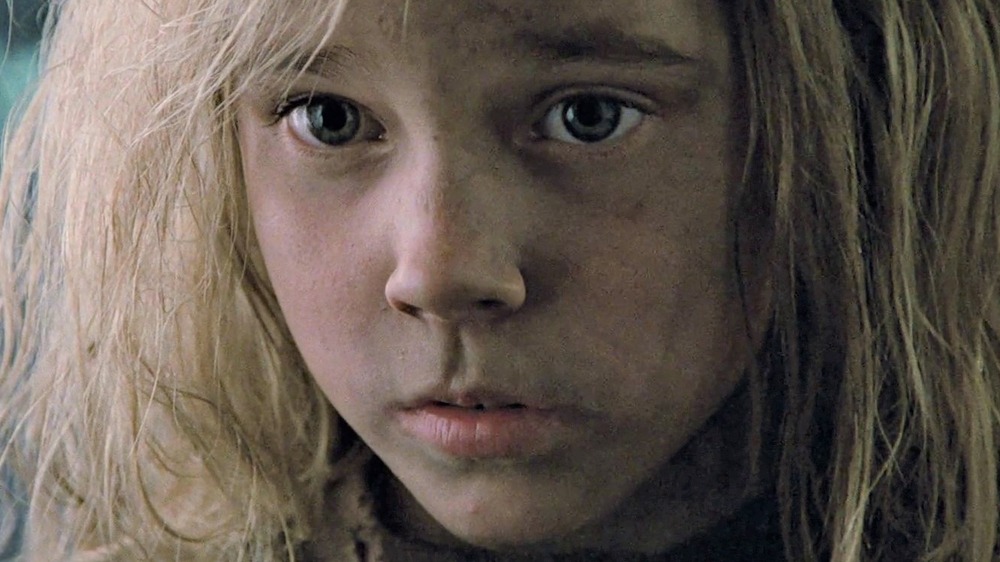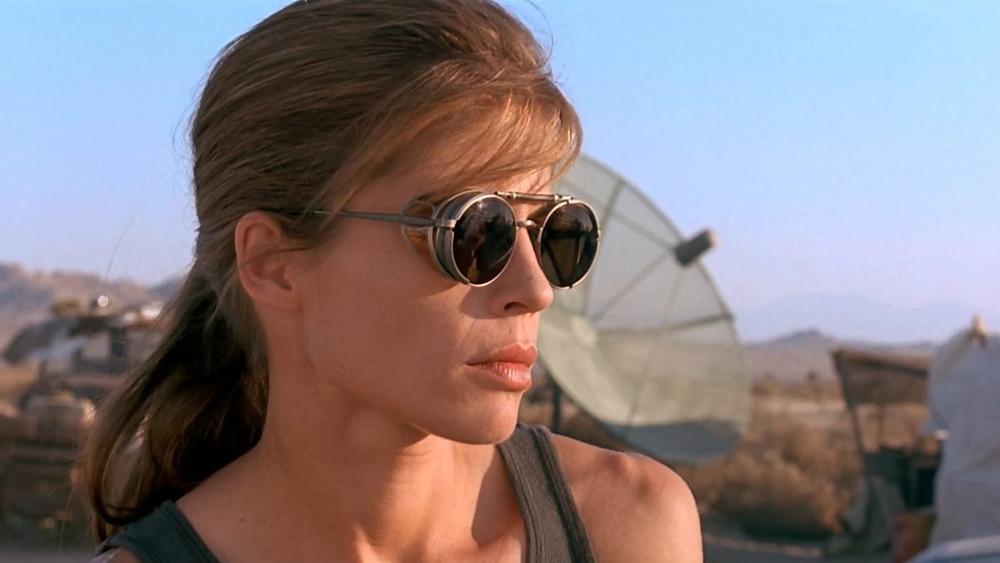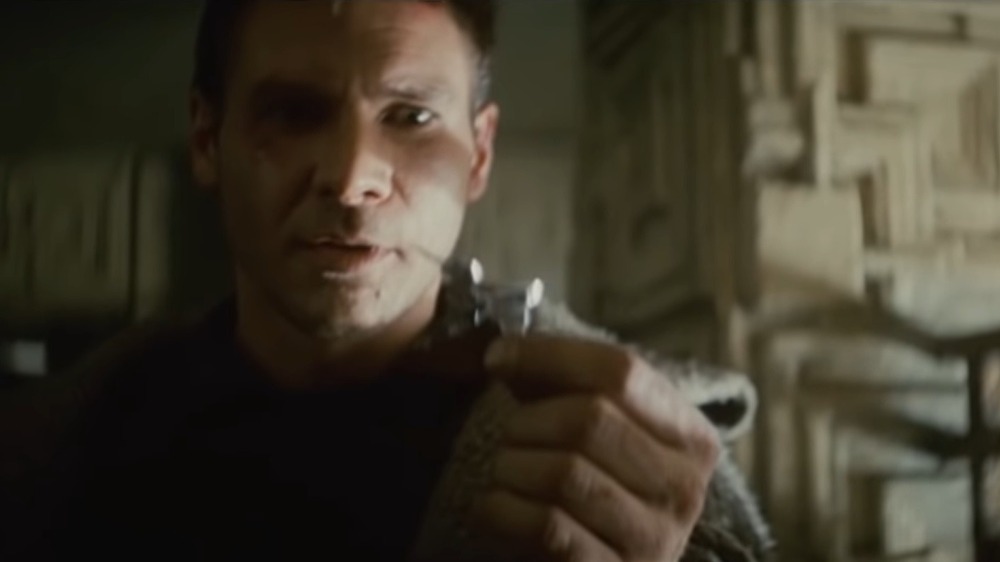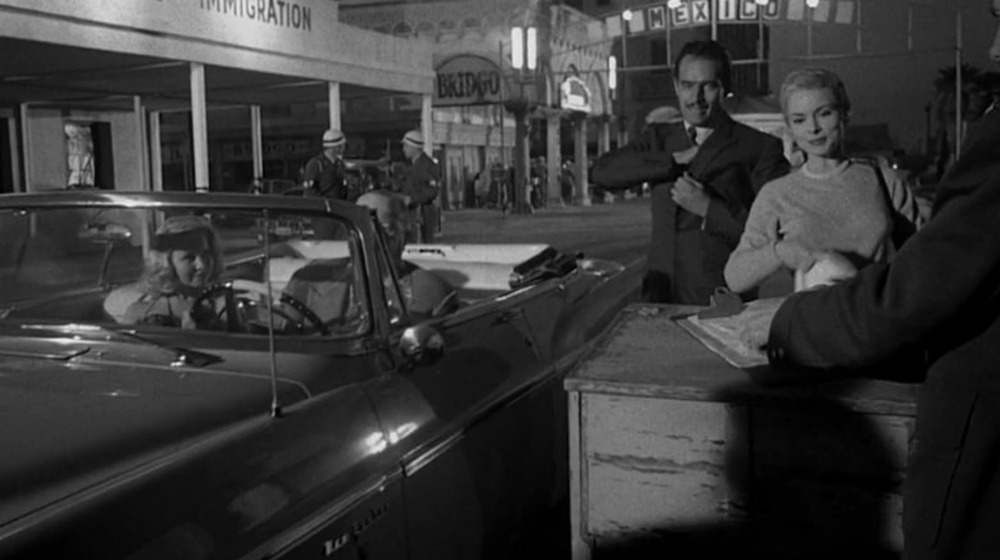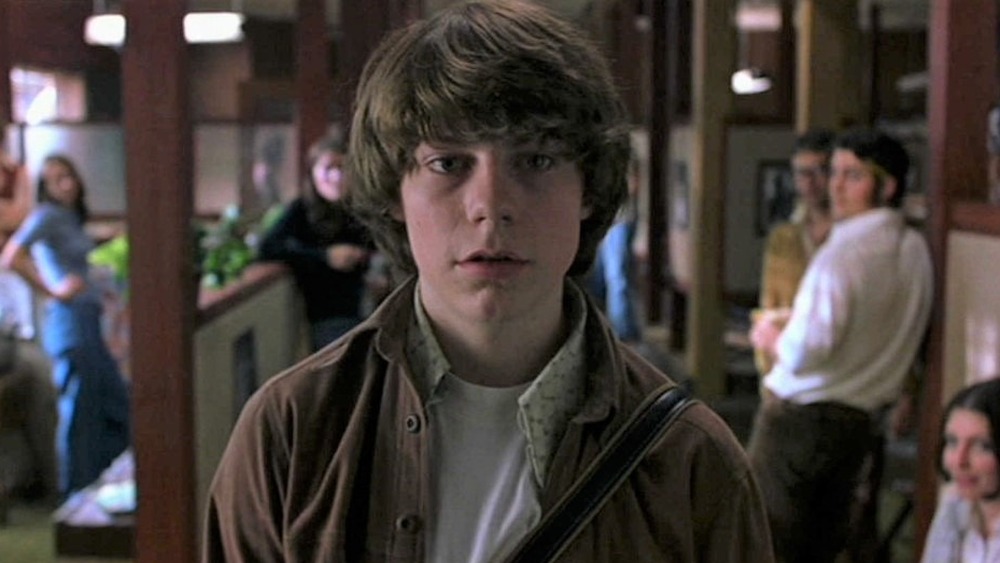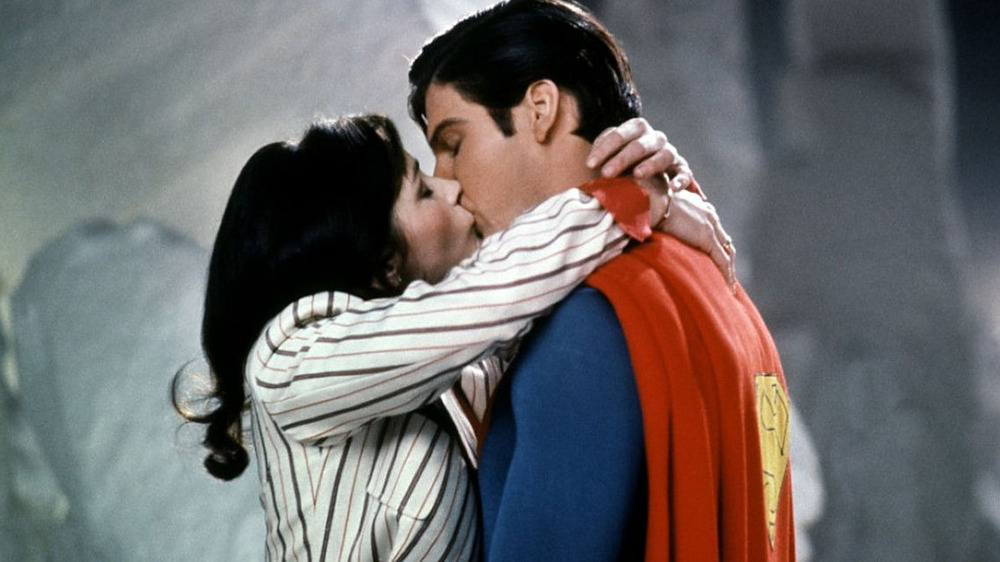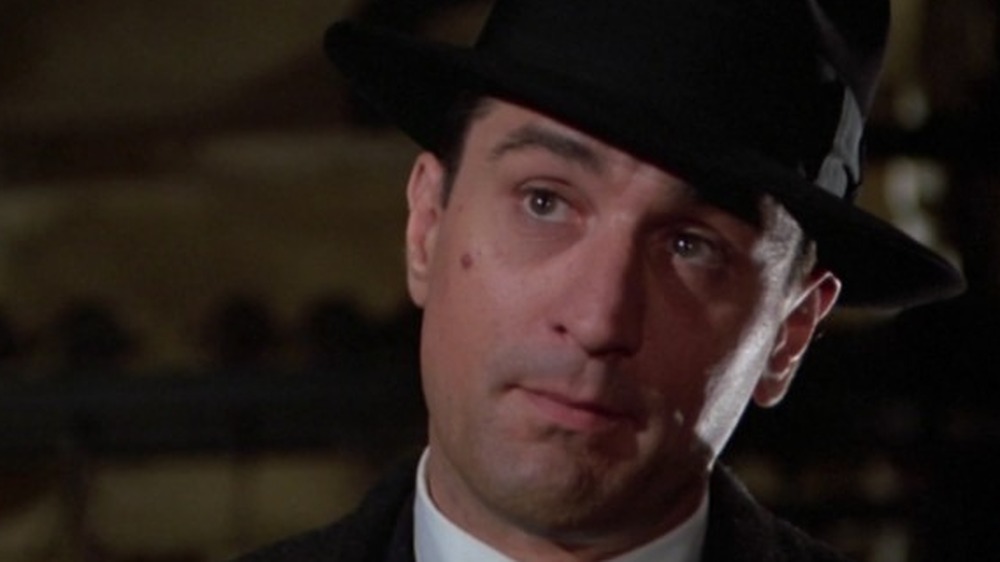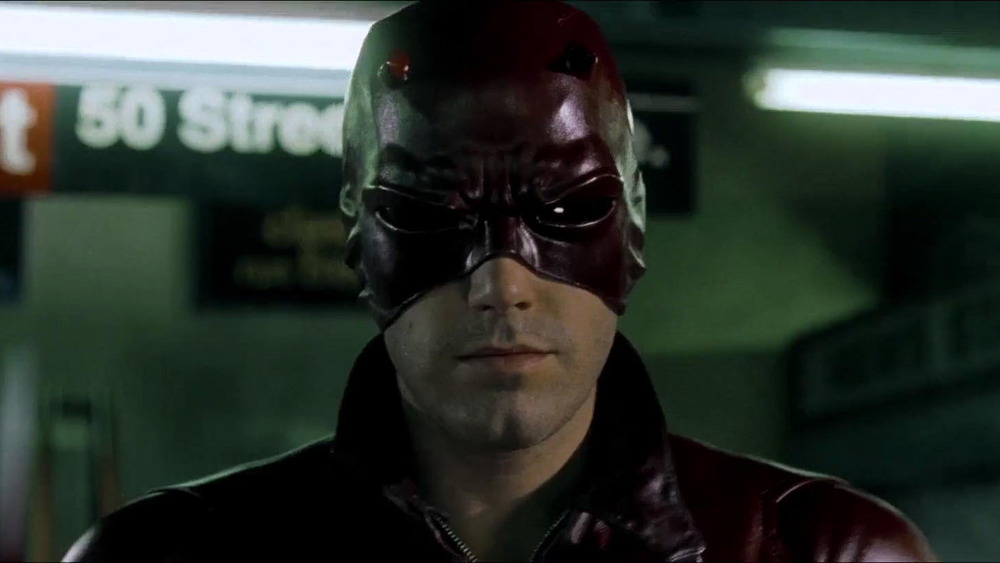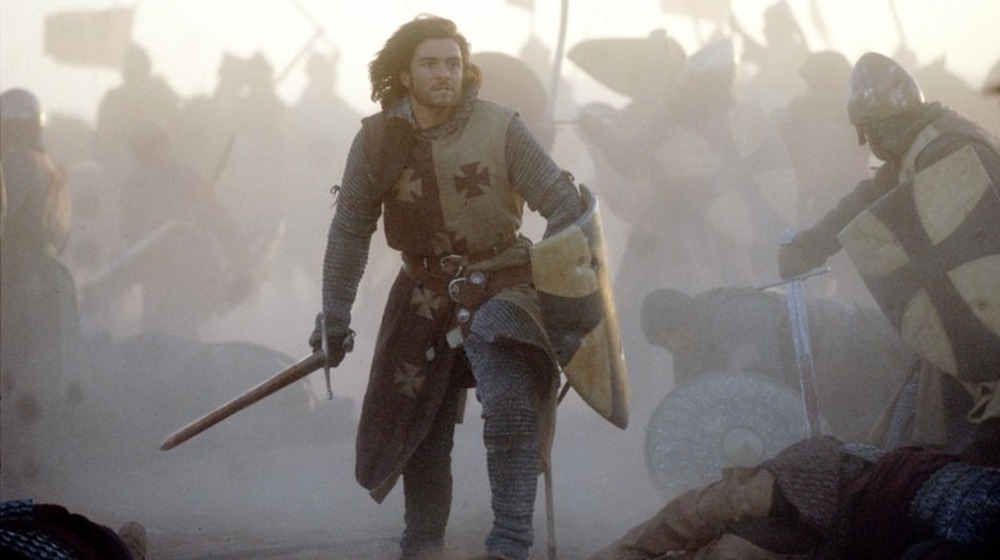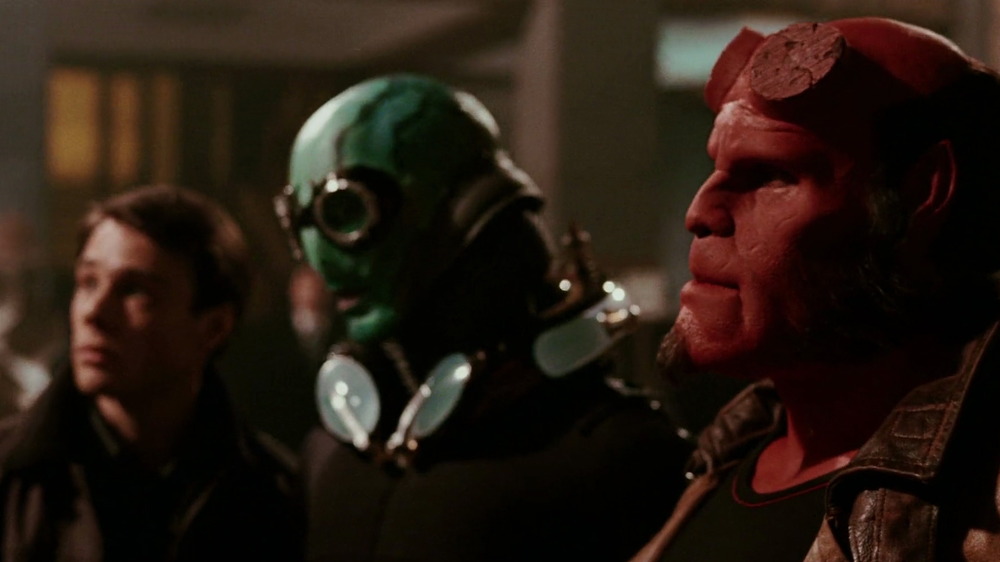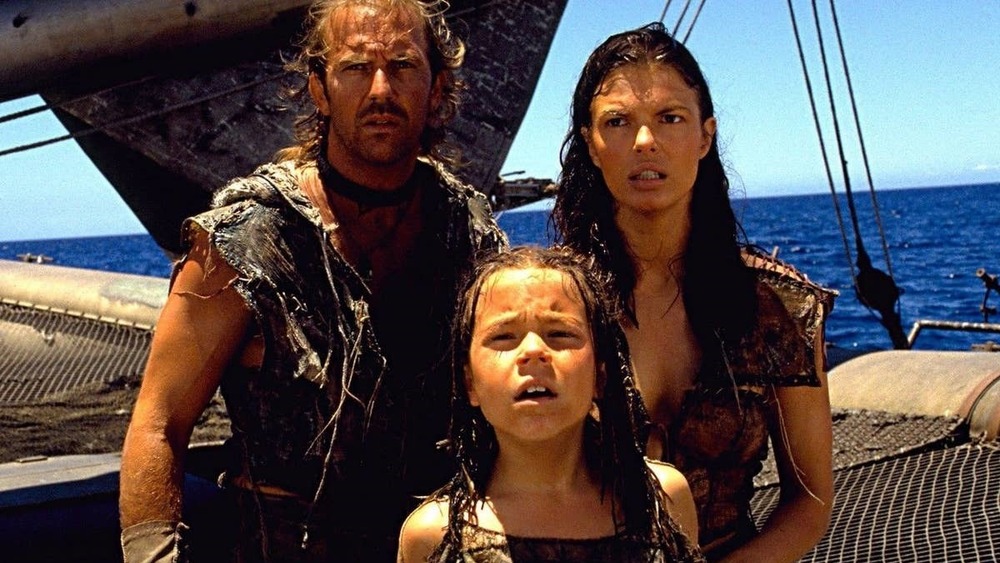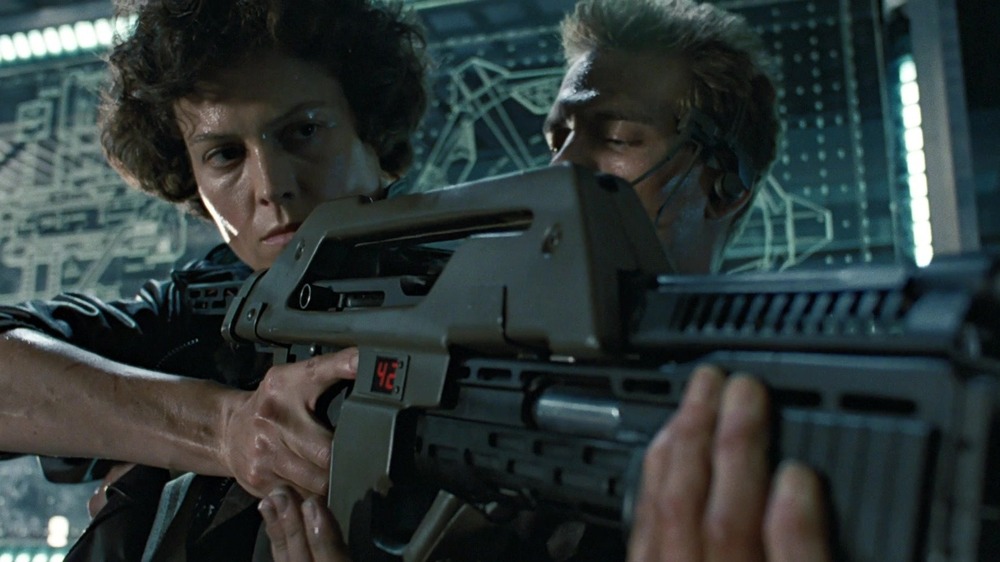Director's Cuts That Are Better Than The Original
Though conventional wisdom states that film is a director-driven medium, sometimes the practical realities of filmmaking mean that there's someone else who gets to make the final decisions. In other words, sometimes a powerful producer or studio head will pull rank on a director and re-edit their film without their approval.
But every once in a while, this isn't the end of the story. Sometimes, usually when the initial theatrical release of a film is poorly received, the director gets a second chance, an opportunity to release their version of the film, a "director's cut." Sometimes this is just a shallow marketing ploy, and the changes between the two versions of a film are fairly negligible, but other times, the degree to which a film can change between a theatrical cut and a director's cut can be mind-blowing.
So today, we're running down our favorite director's cuts of all times. Not just the best films, but the ones that most dramatically improved upon the quality of their original theatrical cuts. With these films, the differences are so stark that we'd argue that, if you've only seen the theatrical cut, you haven't seen the real movie at all.
The Terminator 2 director's cut shows a softer side of some hard characters
The 1991 theatrical cut of Terminator 2: Judgment Day was an instant hit with audiences and critics. If you went back in time and told someone that this version of Terminator 2 would go down in history as the "bad version" of the movie, they'd never believe you, even if you'd just appeared before them naked in a bubble made of lightning. But you'd be right, because as good as the theatrical version of T2 was, the director's cut was even better. With the re-addition of just a few short scenes that had been tragically cut during editing, Terminator 2 was transformed into a totally different movie.
Sarah Connor's new dream sequence, where she reunites with lost lover Kyle Reese, reveals a softer, more human side to her character which contrasts with the hardened persona she presents throughout most of the film. There's also an additional scene at the Dyson residence, which humanizes the character of Miles Dyson before Sarah shows up to assassinate him. But the biggest change of all comes with an entirely new subplot, where Sarah and John Connor reset the T-800's CPU so that he can now think for himself and learn how to be more human. After that, we get several new scenes in which the T-800 tries to understand and mimic human behavior, and they're some of the most delightful moments in the film. The director's cut of Terminator 2 is a film with a raw, beating, human heart, and it makes the theatrical cut seem as cold as the T-1000 by comparison.
Which version of Blade Runner is the best?
Ridley Scott's initial vision for his sci-fi detective film, Blade Runner, was for an atmospheric movie, full of long stretches of silent scenery. And capping off this mysterious film would be an equally ambiguous ending, where our heroes — on the run from the authorities — board a dingy elevator and descend into an uncertain future.
However, when the film was presented to test audiences, they didn't know what to make of it, and they found the film boring and confusing. The studio's solution to this problem was twofold. First, they added a voiceover track, in which Ford sporadically explains his character's inner thoughts and motivations. Second, they changed the ending. Instead of cutting to black after our two heroes nervously enter a cramped elevator, now we see them happily drive off into the sunset, with a voiceover track assuring us that they'll find rest and happiness.
When this edited version of the film premiered, it garnered a somewhat tepid reaction from critics. It wasn't until ten years later, when the director's cut was finally released, that critics finally came around. They agreed this moody and ambiguous cut was unequivocally better, even if Scott wasn't 100% involved in the final editing process. However, an even better version of the film exists — the widely hailed Final Cut. And that makes sense as Ridley Scott was in control of every single aspect of this final version of the film.
Touch of Evil needed a good touch-up
A notorious perfectionist, filmmaker Orson Welles often said that he "could work forever on the editing of a film." But when Welles was editing his 1958 movie, Touch of Evil, Universal didn't have time for any of that, so they took the film away from Welles and finished it without him. Welles was so reluctant to cede control that he penned a 58-page memo where he outlined his wishes for the how the film should be finished. However, this document was ignored by Universal, and Touch of Evil was totally overhauled during the editing process. Not only were large sections of the film cut or re-ordered, but the studio also wrote and filmed a handful of totally new scenes without Welles' involvement.
It wasn't until 1998 that audiences everywhere got a chance to see the film as Welles had envisioned it, when editor Walter Murch cut a new version of the film that followed Welles' memo as much as possible. This posthumous director's cut improved on the previous version in countless tiny ways, and one of the biggest changes occurs right at the beginning. Touch of Evil begins with an iconic three-minute long scene that's filmed in a single take, as a time bomb slowly counts down to zero. In the theatrical cut of the film, credits roll over this scene, and the score by Henry Mancini plays, but in this new cut, there's no credits and no music. Instead, the viewer is immediately immersed in the world of the film and spends anxious minutes basking in all the ambient sounds of that terribly tense scene.
The Almost Famous director's cut lets us spend way more time with our favorite characters
Despite not being all that financially successful during its initial theatrical run, 2000's Almost Famous was a big hit with critics, and it swiftly gained a small but devoted fanbase. Over ten years later, their loyalty was rewarded when Cameron Crowe released a director's cut known as the "Bootleg Cut," with a whopping 40 minutes of additional footage.
Almost Famous tells the story of William, an aspiring, teenaged rock and roll journalist who gets his first major assignment, going on tour with a moderately successful rock band called Stillwater. The theatrical cut is a somewhat meandering and episodic film, and the director's cut is even more so — though not in a bad way — allowing viewers to spend even more time chilling out in this film's beautifully realized vision of the early 1970s.
That being said, there's one notable deleted scene that still didn't make this new cut. Here, our protagonist — in an attempt to get his mother to understand the greatness of rock music — plays her the entirety of Led Zeppelin's "Stairway to Heaven," in real time. It's in the special features, but it wasn't included in the film because Crowe couldn't secure the rights to the song. So if you want the full experience, you'll need to play your own version of "Stairway to Heaven" at home as you watch the scene, pressing play at the appropriate moment. This makes Almost Famous perhaps the only example of a film where, if you want to watch the true director's cut, it's technically possible, but you have to do some of the assembly work yourself.
The Superman II director's cut has a complicated history
The first two Superman films starring Christopher Reeve were filmed in a somewhat unusual manner. In order to save on costs, they were shot simultaneously. But eventually, in order to hit its release date, Donner gave all his attention to finishing the first film. However, once Superman flew into theaters, producers Alexander and Ilya Salkind — who famously didn't get along with Donner — decided to replace the director for the sequel, hiring Richard Lester instead.
Lester brought a very different sensibility to the project. As he put himself, "[With Donner,] there was a type of epic quality, which isn't in my nature. ... I play around with slightly more unexpected silliness." Lester re-shot much of the film with a far more comedic tone, but this wasn't the only change that was made. The producers also cut all of the scenes Donner had filmed containing Marlon Brando's character of Jor-El due to issues they were having with the actor regarding his paycheck.
It wasn't until 2006 that audiences got a chance to see Superman II as Donner originally intended. This newly assembled "Richard Donner Cut" removed all of Lester's goofier additions and re-inserted the previously excised footage of Jor-El. There were still a few bits missing that Donner never had a chance to shoot, so the editors had to use some footage from early screen tests to fill in the gaps, which doesn't totally match the look of the rest of the film. That being said, the Donner Cut is still clearly the overall superior version of Superman II, even if it's a little rough around the edges.
Once Upon a Time in America was butchered by executives
When master filmmaker Sergio Leone began work on Once Upon a Time in America, he envisioned an enormous, sprawling gangster epic — a film that would jump around throughout various time periods from 1918 to 1968 as it told the story of the life of two friends, a pair of gangsters fighting their way to the top of New York City's criminal underworld.
The only problem was that perhaps the story ended up being too epic. When filming completed, Leone had about ten hours of footage, and he considered splitting it into two movies. The distributors, however, pressured him to severely cut down the scope of his vision, and he eventually relented. A version of the film that was just under four hours long was shown at the 1984 Cannes Film Festival, where it was met with an overwhelmingly positive reception. However, this still wasn't good enough for American distributors. By the time Once Upon a Time in America hit theaters stateside, it had been cut down again to just over two hours long ... without Leone's approval. Making matters even worse, in this new cut of the film, the film's once fractured timeline had now been "fixed," with all the scenes now shown in strict chronological order.
This trimmed-down American cut was immediately condemned by film critics and audiences alike. Over the course of the next few decades, multiple director's cuts were released that un-did these terrible changes. Film fans may quibble a bit over which cut is the absolute best, but they all agree that the abominable American theatrical release belongs at the bottom of the list.
This version of Daredevil is actually kinda awesome
We're guessing you probably haven't thought much about the 2003 Daredevil movie over the last decade or so, and y'know, we can't blame you for more or less forgetting about it entirely. The theatrical cut of the film was really not great, with its shallow plot, dorky action scenes, and cringe-inducing romance. That being said, if you like the idea of a Daredevil film, just not that one, you owe it to yourself to check out the film's director's cut, as it's a drastic improvement over the original in just about every conceivable way.
So much about this version is just a little bit better. The fight scenes are longer and more brutal, less time is devoted to Matt's romance with Elektra (and their awkward sex scene is cut entirely), and that gives us way more time to get to know Matt Murdock as Matt Murdock the lawyer. There's even a whole new subplot in this version of the film, where lawyer Matt Murdock is trying to help out a man who's been framed for murder, played by Coolio, and it's pretty darn great. Even with all of these changes, Daredevil still isn't a great film, but it's certainly a much better one and totally worth a watch.
The Kingdom of Heaven director's cut was, well, heavenly
Ridley Scott's historical epic Kingdom of Heaven received somewhat of a mixed reception upon its initial release. Though it was undeniably a gorgeous film, with some truly impressive acting performances throughout, most critics agreed that the film was cold, mechanical, and lacking any sort of real depth and humanity. It's almost as if something was missing.
It turns out that something was missing. Before the film was released, Fox had pressed Scott to cut about 45 minutes from the film's runtime. Because of this, entire subplots were torn from the movie, pretty much all of which would've helped to explain the inner lives and motivations of the various members of the film's vast ensemble cast.
Unhappy with the lackluster version of the film that had ended up in theaters, Scott released a director's cut of Kingdom of Heaven less than a year after the film's first theatrical premiere. Critics were pleasantly shocked by how big of an improvement the director's cut was over the original. This version of the film was met with near-unanimous critical acclaim, with the additional footage transforming this heartless slog of a film into one of Scott's best.
This version of Hellboy is a whole lot of fun
There's so much to love about the 2004 film Hellboy. The script is so sharp, the production design is so mind-blowing, and the performances are so pitch-perfect that all you want to do is spend more time in this wonderfully weird world, hanging out with all of these sweet and lovely monsters.
Fortunately, the director's cut of Hellboy gives you a chance to do just that. There are no big changes here, just a bunch of small to medium ones. The dialogue scenes run a little longer, so the characters have a bit more space to play off each other, and there's also a bit more time spent on wordless establishing shots, so the viewer has more time to soak in the film's gorgeous scenery.
There's also a bit early on where we learn that the villain of the film, Rasputin, has no eyes, and he wears a pair of glass eyes instead. Then, during the climax, one of Rasputin's glass eyes gets knocked loose, and an otherworldly tentacle squirms out from his empty eye socket. It's a super creepy moment that we think should've definitely made it into the theatrical version of the film.
All in all, we think the director's cut of Hellboy is a bit better, but the differences are slight, so this is one case where it's not the end of the world if you've only seen the theatrical cut. After all, the end of the world happens in both versions.
Waterworld isn't all wet
During its initial theatrical run, Waterworld wasn't an especially beloved film, often cited as the ur-example of a terrible, big-budget, critical flop. But in the years since, Waterworld has received a bit of a cultural reappraisal, and the story around the film has changed. Sure, it's a silly movie, but it's also really fun, and it's gained a spot in the pantheon of cheesy B-movie classics. In part, this is due to the much improved directors cut of the film, known as "the Ulysses Cut."
This expanded version of the film lets the audience spend more time getting to know our various main characters, and it also provides us with a bit more insight into the film's strange post-apocalyptical setting. But the biggest changes that occur in this new cut of the film happen during the ending, when our heroes discover the last dry land remaining in the world. First, our nameless protagonist — previously referred to as just "the Mariner" — is finally given an actual name, "Ulysses." Then, in a Planet of the Apes-esque twist, our heroes discover a plaque half-buried in the dirt that reveals that this strange new island they've just discovered is, in fact, the top of Mount Everest.
This new version of Waterworld probably isn't going to win over any of the haters, but if you want to indulge in this corny delight of a film, the only way to go is the Ulysses Cut.
The Aliens director's cut shines a new light on Ripley
In the time between when director James Cameron finished shooting Aliens and when the film hit theaters in 1986, quite a few scenes were cut. Some of these excised bits were just extended action and horror sequences, and the film is still fine without them. However, there's one deleted scene that's so essential that it's removal was, in our opinion, basically a crime against cinema.
When the film begins, Sigourney Weaver's Ripley discovers that she's spent the last 57 years drifting through space in suspended animation. Shortly after this, there's a scene that was cut from the theatrical version of the film in which Ripley learns that her daughter — who was about to have her eleventh birthday when Ripley saw her last — has died of old age.
Once you watch the film with this missing scene intact, everything about the rest of the movie changes. When Ripley discovers the orphaned child Newt and vows to keep her safe, all of their interactions are now charged with a powerful and bittersweet subtext. It's not just Newt who's clinging to Ripley because her family is gone — Ripley is clinging back to Newt just as hard because she's experiencing the same exact thing. It's a testament to the strength of the original film that Aliens was still so beloved even with this essential element missing from the story, but there's no doubt that the director's cut is significantly better.
